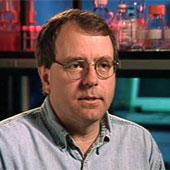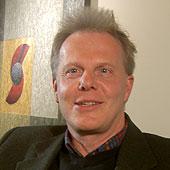Wojciech Stec
Method for producing modified P-chiral nucleotide analogs that can be used to synthesise optimised oligonucleotides
Workhorses of Molecular Biology
Led by Wojciech Stec at the Polish Academy of Sciences’ Centre of Molecular and Macromolecular Studies in Lodz, a group of Polish scientists filed a patent application in 1992 on their breakthrough in the methods and compounds for synthesising P-chiral oligonucleotide analogs.
In their patent (published in 1998) the scientists claimed they had discovered a method enabling the production of DNA and RNA components and their analogs. But the real innovation was that they were making the compounds available in a pre-defined, spatial alignment. These special compounds, they hoped, might be used as customised medication or as tools in diagnostics, forensic medicine and criminalistics.
His work has taken the award-winning inventor Stec around the world, and he has worked as a visiting professor in several countries while enjoying great respect for his discoveries from fellow experts.
In assessing the invention, Dr John Love, an independent expert at Exeter University’s school of biological sciences, explains that oligonucleotides are a workhorse of molecular biology and are used in many applications, “the most significant probably being PCR (the polymerase chain reaction) which is the basis of certain types of gene cloning, DNA sequencing and DNA fingerprinting.”
The patent also claimed that the availability of synthetic oligonucleotides and a variety of nuclease-resistant analogs such as phosphorothioates and methylphosphonates has encouraged investigation into their use as therapeutic compounds for treating a variety of conditions associated with the inappropriate expression of indigenous and exogenous genes.
John Rossi, another independent expert on the matter, is chairman professor of molecular biology at the Beckman Research Institute in California, one of America’s major centres for pioneering biomedical research. He feels the breakthrough by Stec and his team is significant “to the extent that chiral containing phosphate or phosphorothioate linkages are being used in antisense molecules.”
Rossi continued: “The phosphorothioates are very chiral, and were popular a few years ago because of various stability and hybridisation properties. They lost favour because of toxicity, perhaps in part due to chirality. It remains to be seen in non-chiral PS oligonucleotides will regain favour.”
Rossi said the patent’s significance depends on the biological efficacy of such non-chiral backbones and notes that it “may be a useful patent for specific modifications of the ends of the molecules if it stabilises them in sera without affecting activity.”
The patent for Poland – granted before the European one – was licensed to Applied Biosystems Inc, then Lynx Therapeutics Inc and finally Inex Inc. Its commercial development was killed off, however, when the Federal Drug Administration in the United States approved the AIDS drug Vitravene in 1998. The decision effectively ended other antisense-drug companies’ interest in the patent.
The rights to the invention returned to the Centre of Molecular and Macromolecular Studies, but in 2002 they were purchased by Genta Inc, a New Jersey-based biopharmaceutical company that develops drugs to treat cancer patients.
Patent co-author Stec received the Foundation for Polish Science award (known as the Polish equivalent to the Nobel Prize) in 2004. He has been a visiting professor to medical institutes in Germany, China, Japan and the United States, and is still connected to the Centre of Molecular and Macromolecular Studies as the head of its bioorganic chemistry division.
Stec continues his work in many fields, including the medicinal applications of oligonucleotides, the area this unique invention also focused on.
Contact
European Inventor Award and Young Inventors Prize queries:
european-inventor@epo.org Subscribe to the European Inventor Award newsletterMedia-related queries:
Contact our Press team#InventorAward #YoungInventors





